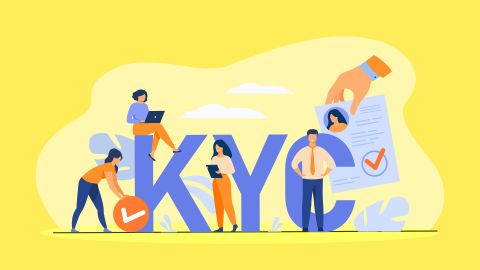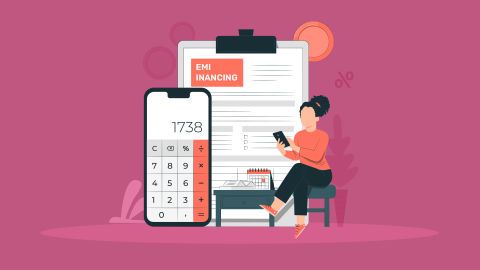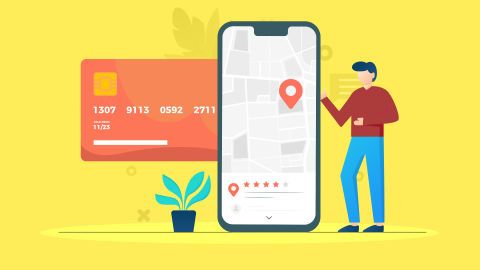Looking for a new smartphone but confused between Android and iOS? The difference between Android and iOS goes beyond just their names. These operating systems shape how we use our phones every day, from sending messages to playing games. This article will break down what makes each system unique, helping you decide which fits your needs better - all while keeping your budget in mind with the Bajaj Finserv Insta EMI Card option.
Introduction to Android and iOS
Android and iOS dominate the mobile world today. Both systems power the smartphones we rely on daily, but they work in very different ways. Android, made by Google, runs on phones from brands like Samsung, Xiaomi, and OnePlus. iOS, created by Apple, works only on iPhones. While Android gives users more freedom to change how their phone looks and works, iOS focuses on making everything simple and secure.
What is Android?
Android is a mobile operating system created by Google. It powers most non-Apple smartphones in the world today. Android is based on open-source code, which means phone makers can change it to fit their needs. This is why Samsung phones look different from Xiaomi phones, even though both use Android.
Android lets users change many things about their phones. You can add widgets to your home screen, download different app launchers, and even install apps from outside the Google Play Store. This makes Android popular with people who like to make their phone truly their own.
What is iOS?
iOS is Apple's mobile operating system that runs exclusively on iPhones and iPads. Apple designed iOS with simplicity in mind, making it easy for most people to use without reading instructions. The system has strict security rules, which helps protect users from harmful apps and viruses.
iOS works perfectly with other Apple products like MacBooks, Apple Watches, and AirPods. Everything syncs together so you can start something on your phone and finish it on your computer. The App Store offers thousands of high-quality apps that must pass strict tests before being available to download.
Key differences between Android and iOS
| Feature | Android | iOS |
| User interface | Highly customisable with widgets and launchers | Clean, uniform design with limited customisation |
| Device variety | Available on phones from many companies | Only available on Apple iPhones |
| App stores | Google Play Store plus alternative sources | Apple App Store only |
| Price range | Options from budget to premium | Mostly premium-priced devices |
| Updates | Varies by manufacturer and model | Consistent updates for 5+ years |
| File management | Open file system with folder access | Restricted file management system |
| Default apps | Can change default apps for most functions | Limited ability to change default apps |
| Customization | Deep personalisation possible | Limited to wallpapers and widgets |
User interface and customisation
- Android offers extensive customisation options including widgets, themes, and custom launchers that completely change how your phone looks and works. You can make your Android phone truly unique to match your style and needs.
- iOS has a more uniform look across all devices. Recent updates allow some widget placement on home screens, but options remain limited compared to Android. This makes iOS easier to learn but less flexible.
App store and software availability
- Android users can access apps through the Google Play Store, which has millions of apps with varying quality. Users can also install apps from other sources if they choose, giving more freedom but potentially increasing security risks.
- iOS restricts downloads to the Apple App Store only. All apps undergo strict quality checks, resulting in fewer apps overall but generally higher quality and security. Many premium apps appear on iOS first.
Performance and optimisation
- Android performance varies widely depending on the device manufacturer and specifications. Budget phones may slow down faster than premium models.
- iOS devices typically maintain smooth performance even on older models because Apple optimises the software specifically for their limited hardware range. This means iPhones often feel fast even with less RAM than Android phones.
Hardware and device compatibility
- Android runs on devices from many manufacturers, offering choices at every price point from basic budget phones to premium flagships.
- iOS works only on Apple devices, limiting hardware choices but ensuring consistent quality and performance across all products.
Integration with other devices
- Android offers basic connectivity with other devices but lacks a truly unified ecosystem. Different manufacturers have their own connection solutions that don't always work together smoothly.
- iOS devices work together seamlessly. You can answer iPhone calls on your MacBook, copy text on your iPhone and paste it on your iPad, or automatically unlock your Mac with your Apple Watch.
Software updates and longevity
- Android update schedules depend on the manufacturer. Premium phones might get updates for 2-3 years, while budget models often receive fewer updates.
- Apple provides iOS updates to devices for 5+ years on average. Even older iPhone models receive security patches, making them useful for longer periods.
Voice assistants: Siri vs. Google Assistant
- Google Assistant on Android understands natural language better and connects to more third-party services and smart home devices. It excels at answering complex questions and providing relevant information.
- Siri on iOS works well with Apple services but has more limited third-party integration. While improving, Siri still trails Google Assistant in understanding complicated requests.
Gaming and performance differences
- Android offers more gaming options including emulators for old console games and sideloaded apps not available on official stores. Performance varies greatly depending on the phone model.
- iOS provides consistent gaming performance across devices of the same generation. Many premium mobile games launch on iOS first due to easier development for standardised hardware.
Pricing and value for money
- Android devices come in all price ranges, from basic Rs. 5,000 phones to premium Rs. 1,50,000 models. This variety makes Android accessible to more people regardless of budget.
- iOS devices maintain premium pricing, with even older models commanding relatively high prices. The initial investment is higher, but iPhones typically retain value better over time.






